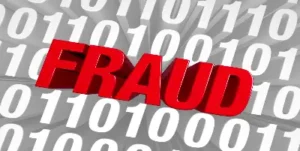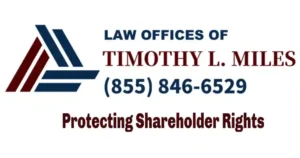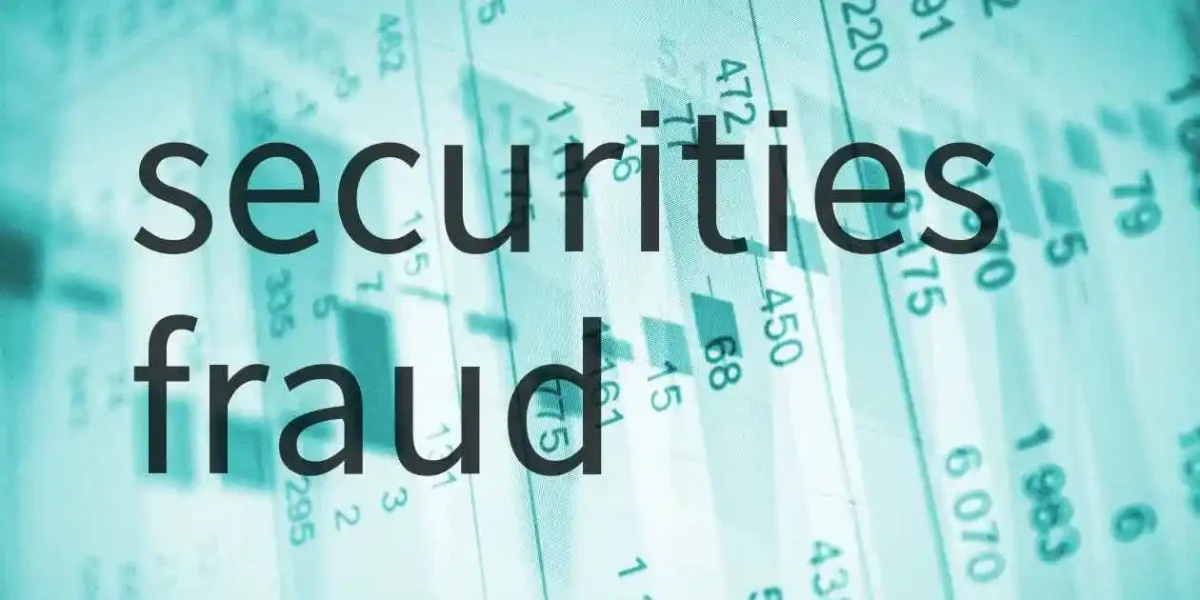Introduction to the Fortrea Class Action Lawsuit
The Fortrea class action lawsuit seeks to represent purchasers or acquirers of Fortrea Holdings Inc. (NASDAQ: FTRE) securities between July 3, 2023 and February 28, 2025, inclusive (the “Class Period”). Captioned Deslande v. Fortrea Holdings Inc., No. 25-cv-04630 (S.D.N.Y.), the Fortrea class action lawsuit charges Fortrea and certain of Fortrea’s top executives with violations of the Securities Exchange Act of 1934.
If you suffered substantial losses and wish to serve as lead plaintiff of the Fortrea lawsuit, or just have general questions about you rights as a shareholder, please contact attorney Timothy L. Miles of the Law Offices of Timothy L. Miles, at no cost, by calling 855/846-6529 or via e-mail at [email protected]. Lead plaintiff motions for the Fortrea class action lawsuit must be filed with the court no later than August 1, 2025.
Please see the various investor resources below for an additional wealth of information.
In this comprehensive guide, you will learn everything an investor needs to know about the Fortrea class action lawsuit.
Overview of the Fortrea Class Action Lawsuit
The Fortrea lawsuit is a securities class action lawsuit that centers on allegations of misleading investors through the provision of inaccurate or incomplete information regarding the company’s financial status and operations. Such allegations, if proven true, could result in significant legal and financial consequences for Fortrea. You need to grasp the magnitude of these claims and their potential impact on the company’s future.

Understanding the lawsuit requires analyzing the details of the allegations. Investors claim that Fortrea’s disclosures were not as transparent as they should have been, leading to financial losses once the truth was revealed. Legal experts are examining whether there was a deliberate attempt to mislead stakeholders, which could lead to punitive measures.
For anyone involved in investing, the Fortrea class action lawsuit serves as a stark reminder of the importance of due diligence and the risks associated with corporate investments. As you navigate through the nuances of this case, consider how transparency and accountability play pivotal roles in maintaining investor trust and confidence in the market.
Allegations in the Fortrea Class Action Lawsuit
Fortrea is a global clinical research organization (“CRO”) that provides biopharmaceutical product and medical device development solutions to pharmaceutical, biotechnology, and medical device customers.
According to the complaint, in June 2023, Labcorp Holdings Inc. spun off Fortrea as a standalone, publicly traded company (the “Spin-Off”). At the time of the Spin-Off, certain of the long-term projects in Fortrea’s portfolio remained ongoing (the “Pre-Spin Projects”).
In connection with the Spin-Off, Labcorp and Fortrea entered into several transition services agreements (the “TSAs”), pursuant to which Fortrea pays Labcorp to provide certain transitional services for a set period.
The Fortrea class action lawsuit alleges that defendants throughout the Class Period made false and/or misleading statements and/or failed to disclose that:
- Fortrea overestimated the amount of revenue the Pre-Spin Projects were likely to contribute to Fortrea’s 2025 earnings;
- Fortrea overstated the cost savings it would likely achieve by exiting the TSAs;
- As a result, Fortrea’s previously announced EBITDA targets for 2025 were inflated; and (iv) accordingly, the viability of Fortrea’s post-Spin-Off business model, as well as its business and/or financial prospects, were overstated.
The Fortrea class action lawsuit further alleges that on September 25, 2024, Jefferies published a report downgrading Fortrea from buy to hold, citing perceived weaknesses in Fortrea’s business model as a CRO amid pressure on biotechnology funding and suggested that the cost savings Fortrea expects to achieve by exiting the TSAs are “[n]ot as [m]aterial as [o]ne [m]ight [t]hink,” stating that “IT infrastructure costs to exit the TSAs are already non-GAAPed out of adjusted EBITDA.
Thus, once TSAs are exited, [Fortrea] will just be replacing TSA costs with internal operating costs.” On this news, the price of Fortrea stock fell more than 12%, according to the complaint.
Then, on December 6, 2024, market analyst Baird Equity Research downgraded Fortrea to neutral from outperform after Fortrea abruptly cancelled two scheduled conferences, stating that “[g]iven our ongoing concerns around the sector, [Fortrea’s] choppy history post spin, and lack of clarity on the abrupt communications course change, we cannot recommend an actionable investment (buy or sell),” according to the complaint.
The Fortrea lawsuit alleges that on this news, the price of Fortrea stock fell more than 8%.
Finally, on March 3, 2025, the Fortrea lawsuit further alleges that Fortrea announced its fourth quarter and full year 2024 financial results, disclosing that its “targeted revenue and adjusted EBITDA trajectories for 2025 [were] not in line with [its] prior expectations.” According to the Fortrea lawsuit, specifically, in an earnings call held that same day, Fortrea revealed that Fortrea’s Pre-Spin projects are “late in their life cycle [and] have less revenue and less profitability than expected for 2025,” that “post-spin work is not coming on fast enough to offset the pre-spin contract economics,” and that “older versus newer mix issue will continue to negatively impact [Fortrea’s] financial performance during 2025.”
On this news, the price of Fortrea stock fell more than 25%, according to the Fortrea class action lawsuit.

Who is Affected by the Fortrea Class Action Lawsuit?
The Fortrea class action lawsuit primarily affects investors who purchased shares and suffered a loss during the period in which the alleged misconduct occurred. If you invested in Fortrea during this time, you could be part of the affected class and eligible for compensation if the lawsuit succeeds.
Identifying whether you are part of the affected group is crucial for understanding your rights and potential benefits. The Fortrea lawsuit may involve a specific time frame and set of circumstances that define the class of investors who can participate. Knowing these details will help you determine your eligibility and take appropriate action.
In addition to investors, the lawsuit can also impact the company’s executives, board members, and other stakeholders. The outcome of the lawsuit could influence Fortrea’s reputation, financial stability, and future operations, affecting all parties associated with the company. Staying informed about the lawsuit’s progress is essential for anyone connected to Fortrea.
Understanding Securities Fraud Class Action Lawsuits
Securities fraud class action lawsuits represent a significant legal mechanism for investors who have suffered financial losses due to corporate malfeasance. These lawsuits, such as the Fortrea lawsuit , typically arise when a company or its executives engage in deceptive practices that mislead investors about the company’s financial health or prospect.
The goal of such litigation is to hold the perpetrators accountable and secure compensation for the affected investors. Securities fraud encompasses a range of activities, including insider trading, false financial statements, and misleading disclosures, all of which can severely impact market integrity and investor confidence.
In a class action context, a group of investors collectively brings the lawsuit against the defendant, which could be a corporation or its executives. This collective approach is particularly powerful in the securities realm because it allows individual investors, who might not have the resources to pursue litigation on their own, to band together and seek justice.
The class action mechanism ensures that the legal process is efficient and that the interests of all affected investors are represented.
The complexity of securities fraud class action lawsuits requires plaintiffs to navigate a labyrinth of legal standards and procedural hurdles. One of the most significant challenges is surviving a motion to dismiss, a legal maneuver by the defendants to have the case thrown out before it reaches trial.
Understanding the nuances of the Fortrea lawsuit is crucial for any stakeholder involved, as it sets the stage for the strategic decisions that will follow. In the case of the Fortrea class action lawsuit, these elements come into sharp focus, highlighting the importance of a well-crafted legal strategy.
The Legal Process of Securities Class Actions
The Fortrea class action lawsuit, like most securities fraud cases, may take approximately 2.5 to 4 years to reach a resolution. This timeline illustrates just one aspect of the complex legal proceedings involved.
Companies often face securities fraud class actions when negative news causes a significant drop in their stock price. These cases can make it challenging for investors to obtain compensation. The Fortrea lawsuit aims to recover damages collectively rather than through individual claims.
Steps in the Legal Process
- Filing the Original Complaint: Multiple law firms may file similar complaints against the same defendants in securities class actions. The first lawsuit triggers a 60-day deadline for shareholders to step forward as lead plaintiffs.
- Lead Plaintiff Selection: Investors must file motions to request appointment as lead plaintiff within 60 days of the first notice. The court typically appoints the investor with the largest financial stake in the litigation.
- Motion to Dismiss: Defendants often file a motion to dismiss the united complaint, which can halt discovery during this period. Courts dismiss approximately 43% of securities class actions at this stage.
- Discovery and Evidence Gathering: If the court denies the motion to dismiss, the discovery process begins, involving document exchanges, interrogatories, and depositions.
- Class Certification: Plaintiffs must prove elements such as numerosity, commonality, typicality, and adequacy of representation to certify a class.
- Summary Judgment and Trial Preparation: Defendants may file for summary judgment based on undisputed facts after discovery ends, providing another opportunity to end the case before trial.

Breaking Down the Private Securities Litigation Reform Act of 1995
The Fortrea class action lawsuit will be governed by Private Securities Litigation Reform Act of 1995 (PSLRA) is a significant piece of U.S. legislation aimed at curbing frivolous or unwarranted securities lawsuits. It was enacted by Congress to address concerns that an increasing number of class action lawsuits were being filed against companies, often resulting in settlements regardless of the merits of the case, due to the high costs and risks associated with litigation.
Key Provisions of the PSLRA:
1. Heightened Pleading Standards: One of the most significant changes brought by the PSLRA is the requirement for plaintiffs to meet higher pleading standards when filing a securities fraud lawsuit. Specifically, plaintiffs in the Fortrea class action lawsuit must specify each statement alleged to have been misleading, the reason why the statement is misleading, and, if an allegation is made on information and belief, the plaintiffs must state with particularity all facts on which that belief is formed. This prevents baseless accusations from proceeding to discovery, which can be costly and time-consuming.
2. Safe Harbor for Forward-Looking Statements: The PSLRA provides a “safe harbor” for companies issuing forward-looking statements, such as earnings projections. Provided these statements are identified as forward-looking and accompanied by meaningful cautionary language that outlines factors that could cause actual results to differ, companies are protected from liability if those projections do not come to fruition. This encourages companies to share information about their future plans without undue fear of litigation.
3. Lead Plaintiff Provision: The Act establishes a process for appointing a lead plaintiff in class action lawsuits, typically the investor with the largest financial stake in the lawsuit. This provision addresses the issue of “professional plaintiffs” who would frequently file lawsuits with little regard for the actual merit, thus ensuring that lawsuits are driven by those with significant losses and a genuine interest in the case. Lead plaintiff motions for the Fortrea lawsuit must be filed with the court no later than August 1, 2025.
4. Limits on Damages and Attorneys’ Fees: The PSLRA imposes restrictions on the amount of damages that can be claimed and limits attorneys’ fees. This helps to ensure that the primary motive for a lawsuit is to address genuine grievances rather than to seek large financial rewards through settlements.
5. Discovery Stay: To prevent the high costs of discovery from being used as leverage to force settlements, the PSLRA imposes an automatic stay on discovery while a motion to dismiss is pending. This means that plaintiffs in the Fortrea lawsuit cannot start the discovery process until the court has determined whether the case has sufficient merit to proceed.
Overall, the PSLRA was designed to strike a balance between protecting investors from fraud and preventing the abuse of the legal system through meritless litigation. By setting higher standards for securities fraud claims and providing protections for companies making forward-looking statements, it aims to foster a fairer and more predictable legal environment for both investors and corporations.

Challenges Faced by Plaintiffs in the Fortrea Lawsuit
Plaintiffs in the Fortrea class action lawsuit must navigate several significant challenges to succeed in their case. The PSLRA and court interpretations create various hurdles.
Proving Scienter and Intent
The PSLRA imposes a stringent standard requiring plaintiffs to demonstrate a “strong inference” of scienter, which refers to knowledge of wrongdoing or reckless disregard for the truth. Courts scrutinize these claims closely, often relying on confidential witnesses to support allegations of intent.
Establishing Loss Causation
Plaintiffs must establish a direct link between the alleged misrepresentations and economic losses. This typically involves identifying “corrective disclosures” that revealed the truth and caused stock prices to decline.
Demonstrating Price Impact
Defendants can challenge class certification by proving a lack of price impact, showing that the alleged misstatements did not affect the stock price. The Supreme Court’s decision in Goldman Sachs v. Arkansas Teacher Retirement System requires courts to evaluate whether generic statements could genuinely influence stock prices.
Meeting Class Certification Standards
Class certification in the Fortrea class action lawsuit will be a critical battleground, as courts will conduct a rigorous analysis of Rule 23 requirements. Hard evidence, rather than mere allegations, must demonstrate that these requirements are met.
Resolution of Securities Class Actions
Securities class actions rarely proceed to trial, with settlement being the most common resolution method. Most cases that survive a motion to dismiss ultimately reach a settlement agreement.
The Role of Mediation
Mediation in securities class actions differs from other legal proceedings due to the substantial stakes involved. Independent mediators facilitate discussions between both parties, helping them reach a mutually acceptable agreement.
Settlement Process and Court Approval
Once a settlement is reached, the PSLRA mandates specific notifications to class members, detailing the proposed distribution amount, potential case outcomes, attorneys’ fees, and other relevant information. Class members can file objections or opt out after receiving notification.
Claims Administration and Payout Timeline
If a settlement is approved, an independent claims administrator will manage the distribution of settlement funds. This process typically takes two to three years to conclude after filing, with administrators potentially making multiple distributions to cover late claims.
Steps to Take to Protect Your Interests
Gathering and Organizing Relevant Evidence
In a securities class action lawsuit just like the Fortrea class action lawsuit, evidence is the cornerstone of building a compelling case. For shareholders, gathering and organizing relevant evidence is a critical step in substantiating claims of corporate misconduct. The evidence typically revolves around documents and communications that demonstrate the company’s misrepresentations or omissions, as well as the financial harm suffered by shareholders. Below are some steps you should take:
- Compile all financial statements, press releases, analyst reports, emails, and any internal documents that shed light on the alleged wrongdoing alleged in the Fortrea class action lawsuit.
- Meticulously document your investment history with the Fortrea, including dates of stock purchases and sales, quantities, and prices. This information is crucial for calculating damages and proving that the shareholder suffered financial losses as a result of the company’s actions.
- Maintaining detailed records not only strengthens the individual’s position in the lawsuit but also contributes to the overall strength of the Fortrea lawsuit, by providing a clear picture of the impact on shareholders.
- Organizing this evidence in a systematic manner is equally important. Shareholders can create a comprehensive file of all relevant documents, categorized by type and date, to facilitate easy retrieval and review by legal counsel.
his preparation not only aids in the efficient prosecution of the Fortrea lawsuit but also demonstrates the shareholder’s commitment and readiness to actively participate in the litigation process.
By thoroughly gathering and organizing evidence, shareholders lay a solid foundation for holding corporations accountable and seeking redress for their financial injuries.
Staying Informed: Monitoring Case Developments
In the fast-paced environment of securities class action lawsuits, staying informed about case developments is crucial for shareholders. As the Fortrea class action lawsuit, moves forward, new information and events can significantly impact the strategy and potential outcomes. DoubleVerify shareholders must actively monitor key milestones, such as court rulings, settlement negotiations, and any changes in the legal landscape. Keeping abreast of these developments ensures that shareholders are well-positioned to make timely and informed decisions.
Effective communication with legal counsel is essential for staying updated on case developments. Attorneys provide regular updates and analyses of the ongoing proceedings, helping shareholders understand the implications of each development. This information is vital for assessing the potential risks and benefits of different courses of action, such as whether to accept a settlement offer or continue pursuing the Fortrea lawsuit.
By maintaining open lines of communication with their legal team, shareholders can remain engaged and proactive throughout the litigation process.
Shareholders can also benefit from following news sources and industry reports related to the Fortrea class action lawsuit the defendant company. These sources can provide valuable insights into broader market trends, regulatory changes, and public perceptions that may influence the case. By staying informed, shareholders can better anticipate shifts in the legal and financial landscape, enabling them to adapt their strategies and protect their interests effectively.
In securities class actions, knowledge is power, and staying informed is a key component of successful participation.
Contact Timothy L. Miles Today About a Fortrea Class Action Lawsuit
If you suffered losses in Fortrea stock, call us today for a free case evaluation about an Fortrea class action lawsuit. 855-846-6529 or [email protected] (24/7/365).
Timothy L. Miles, Esq.
Law Offices of Timothy L. Miles
Tapestry at Brentwood Town Center
300 Centerview Dr. #247
Mailbox #1091
Brentwood,TN 37027
Phone: (855) Tim-MLaw (855-846-6529)
Email: [email protected]
Website: www.classactionlawyertn.com
FacebookLinkedinPinterestyoutube



